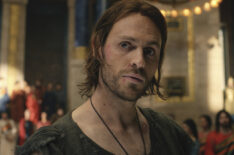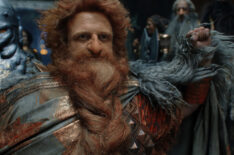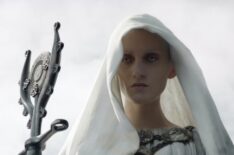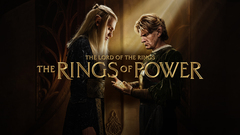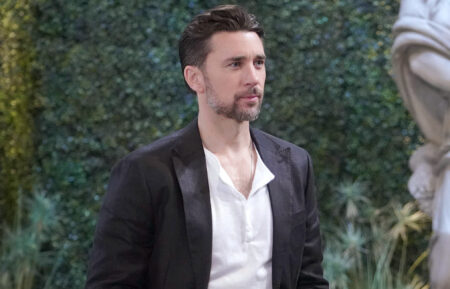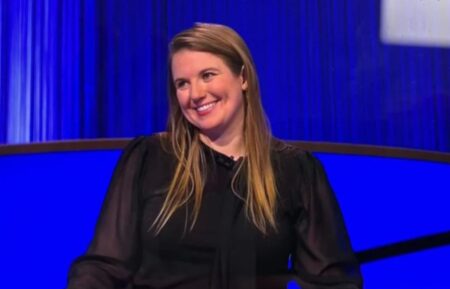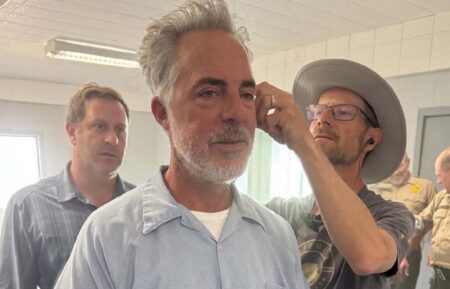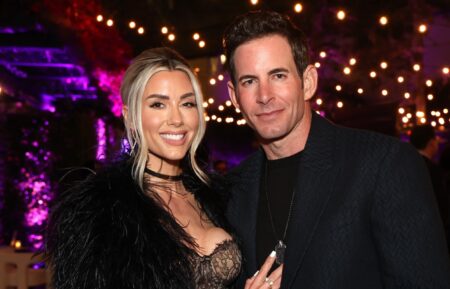‘The Lord of the Rings: The Rings of Power’ Composer Talks Hardest Character Theme to Score

Q&A
Whether you know it or not, you’ve heard Bear McCreary’s work all over TV. The composer is responsible for the scores of Outlander, The Walking Dead, Black Sails, Battlestar Galactica, and more. And now, he’s fulfilled a lifelong dream scoring Prime Video‘s The Lord of the Rings: The Rings of Power.
The Rings of Power‘s music is cinematic and grandiose, but McCreary tells TV Insider he’s never seen a difference between scoring for the big or small screen.
“I did not seek out guidance into how one scores television. I just started scoring it the way that my heroes scored movies,” he says of his early career. “Doing something like The Rings of Power on this scale, it is grandiose, but it really isn’t different in how I approach it. I did not think of it as being big. I just thought, ‘here’s the canvas I’m painting, so these are the brushes I’m going to use. And this is the story I’m going to tell.'”
Here, McCreary breaks down the process of painting his Rings of Power score.
How do you even begin creating a score for a show like this? What was your very first step?
Bear McCreary: For me, the very first step is writing themes. That’s my first step in film and video games, but especially in television where the story is going to unfold beyond the footage that you have at the beginning. You really have to be very mindful. Where is the story going at the end of the season? Where might the story go at the end of this series? And you have to make sure that all the themes you write have baked into them the inherent ability to tell the story that you think you will need in the future.
For The Rings of Power, I came up with a list of themes that I felt were necessary. A typical TV show might be three or five themes. For Rings of Power, it’s 15. I spent almost two months holed up in my studio just writing those 15 themes to ensure that I had all the right material that I would need to tell the story. That really was a tremendous amount of preparatory work that had to take place. Before I even started scoring the first scene, I had already written an hour’s worth of music.
How involved were showrunners J.D. Payne and Patrick McKay?
J.D., Patrick, and [executive producer] Lindsey Weber were all very involved, as were [producers] Justin Doble and Callum Greene. They were extremely helpful in guiding the material. Some of it came to me very naturally, and others I struggled with. For example, one of the first cues that I wrote and one of the first cues that I played for them was from the second episode, when Elrond is led into Khazad-dûm, and we see it for the first time. What you heard on the air was my first draft. I got no notes on that. I played it for them, and I go, “What do you guys think?” I got a round of applause. I feel like the dwarven music is very much in my DNA.
But there were other themes I struggled with, notably Elrond’s theme. I got into the first episode without really having a theme for him that stood out. I had written him a theme, but they didn’t notice it. The reason it wasn’t a good theme is I wasn’t sure what to say. And I realized I was being led on a string by my very vivid memories of Elrond in the films and in the books. He is live. He is authoritative. He is the last word in any discussion, and yet when we meet him in The Rings of Power, he’s younger, he’s an idealist, he’s a diplomat. He doesn’t know where he belongs.
I realized that that young naivete had to be represented in his music. His music would evolve over time to become more authoritative, and so I wrote him this beautiful, innocent little theme that we hear when we meet him in the first episode and in several other times in the early part of the season. It kind of became my favorite theme over time.

Prime Video
I’m so glad that you brought up Khazad-dûm, because that was my favorite musical moment of the first two episodes. What was your main goal for how the score would sound in the Khazad-dûm scenes in Episode 2?
We know the dwarves as a sad, noble, displaced people in diaspora. There’s a sense of that that permeates the original trilogy, The Hobbit films, and Peter Jackson‘s original trilogy that these dwarves are not at their might, so I love the anticipation of that scene. You’ll notice built around this rousing march — bum, bum, bum, bum — that starts right as the door opens. It’s getting ahead of the drama because I’m telling the audience that even though right now, we’re not walking out into this vista, it’s coming. I’m just gonna light that fire right now. We’ve been waiting a long time.
I was at the IMAX screening in New York, and I clutched my friend’s arm in excitement when that music started. I was like, “Oh my God, here we go!” because we’ve never seen Khazad-dûm in its prime before. The music felt like it understood the anticipation and excitement of the moment.
That’s exactly the reaction I was hoping for. That makes me feel so happy hearing you say that.
Well, you nailed it. This might just be because I’ve watched Outlander so many times that I associate bagpipes with it, but I feel like I hear some Outlander influences in the harfoot scores. Is there any truth to that?
I made a parody a few years ago called “Nobody Likes Bagpipes,” and the joke was that I always put bagpipes in my music, and producers always take it out until I got the Outlander job. But the truth behind the joke is I love Celtic music and bagpipes and bodhrán and penny whistle. I always look for an opportunity to write for those instruments. I would not say that Outlander influenced the harfoot music, but instead, say that the harfoot music and Outlander both drew from my innate well of knowledge and affection for Celtic folk music.
I also thought that that was a way of acknowledging where the musical journey of The Lord of the Rings might go in terms of connecting to what Howard Leslie Shore wrote for the film trilogy. He wrote music for The Shire that has a very strong foothold in British folk music and a little toehold in Celtic music. It feels very settled, very warm, and pastoral, like a place you are cozy in. And I wanted our harfoot music to eventually be able to get there.
It’s almost time for battle. #TheRingsOfPower continues this Friday at 12am ET on @PrimeVideo. pic.twitter.com/2Sa9nqtx2p
— The Lord of the Rings on Prime (@LOTRonPrime) September 22, 2022
There’s this sense to me that these small instruments are instruments you can pick up and take with you. I don’t use the orchestra as much. I also use west African mallet instruments called balafons, which are made out of wood. The idea being that everywhere they go in the woods, they’re finding logs and creating little musical instruments.
I wanted to create the sense musically that these people have a sound that will eventually, as they migrate, settle down, and become something that you understand leads to the music of The Shire in the films.
Did you and Howard Shore talk at all when you were preparing for this?
We did. Getting to know him was an unexpected surprise of getting to work on The Rings of Power. He contributed his main title when I was about halfway done. When I finally got to hear this majestic main title that I’d been anticipating the whole time, it lived up to all of my expectations. It’s wistful and nostalgic and beautiful and noble. And it takes me back to those Jackson films. I think it’s a wonderful fanfare for our show.
And speaking with Howard personally was also a dream come true. I found him to be supportive and delightful. We compared and contrasted our creative approach to writing music, which is very similar, and the way in which we use technology in music, which is very different. I remembered thinking that if I could’ve told myself at 21 years old that one day I’d get to talk to Howard Shore about the music of The Lord of the Rings, because I was writing my own music for The Lord of the Rings, my head would’ve exploded.
Do you see the kingdoms of Middle-earth as their own characters as well with their own different musical themes?
Absolutely. And I think you will hear that my score is built upon a foundation of orchestra and choir. That’s the glue that ties it all together, but there are actually six discrete scores, six complete musical languages. The harfoots have instruments and styles that are unique to them. Númenor is the same, the Southlands, the men, and Halbrand have their own style, the elves, the dwarves, even the orcs. Each of those families has unique instruments and harmonic and melodic philosophies that don’t show up anywhere else. And then, within those families, the character themes that come from there tell you whether they are inside the society or outside.
For example, Elrond shares a lot of colors with Valinor, and it tells you that he really wants to fit in. He wants to be with the elves, whereas Galadriel’s theme shares fewer traits because, in a way, she’s the outsider. Durin’s theme shares a lot of dwarvish traits with the Khazad-dûm theme, which ultimately represents his father, but Durin’s theme itself has more layers. It has more warmth, intimacy, [and] even a little comedy. And it tells you that he’s not like everyone else. I loved being able to use a style of music to not only separate these different cultures but even to inform you about the people from those cultures.
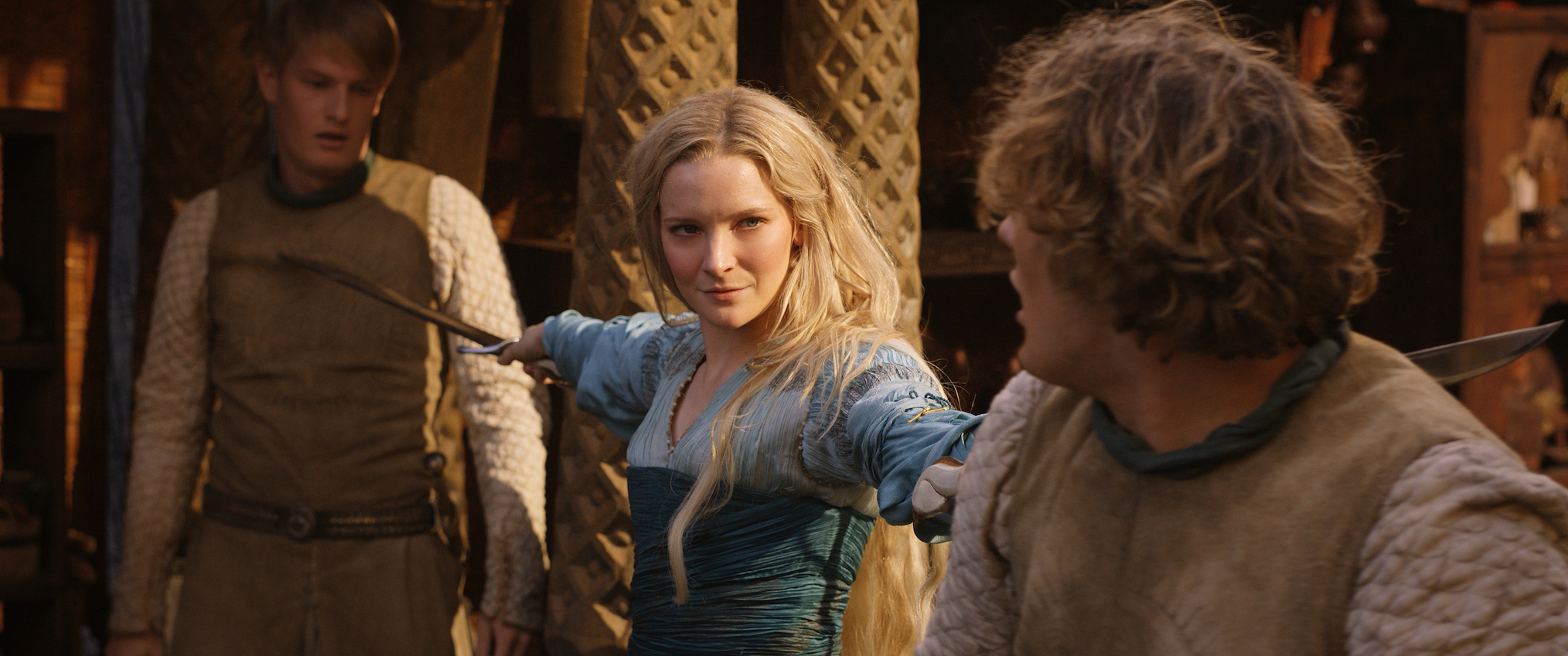
Prime Video
In terms of just the first episode, how do you connect the different themes together, so it’s one cohesive piece of music in the end, with the climax of it being the Stranger crashing into Middle-earth? I also loved the little musical trill that happened when High King Gil-galad sees him shooting across the sky.
Yes! Oh, I love that. It’s a color you don’t hear very often. It’s clarinet, bassoons, and flutes inspired by Stravinsky, who had a huge impact on John Williams. My peers and I joke about how nobody lets us write for woodwinds anymore. It’s just a color that has gone out of favor in filmmaking. I could talk for an hour about why that is, but on The Rings of Power, they let me use these beautiful colors that are traditional, old-school orchestral.
That moment, having a clarinet solo burst out of the orchestra and rip across the sonic spectrum, if I had to pick a single moment of hitting picture that I’m most proud of, it’s that because I have not heard a clarinet solo do that since like the early days of John Williams’ career, the classic era. He’s the only one that would really do that.
In terms of how to keep it all unified, I didn’t really worry about it because it all comes through my brain. It’s all filtered through my lens. It’s only gonna be so different when it’s my instincts that tie it all together. And I just kept thinking to myself, “If I like this, and I’m a fan of Lord of the Rings, then I think fans of Lord of the Rings will like this.”
The Lord of the Rings: The Rings of Power, Fridays, Prime Video
From TV Guide Magazine
How 'Countdown' Recruited Jensen Ackles to Go Full 'Die Hard'
Countdown boss Derek Haas talks creating the character around Ackles, and the cast teases the “Avengers”-like team of the crime thriller. Read the story now on TV Insider.

